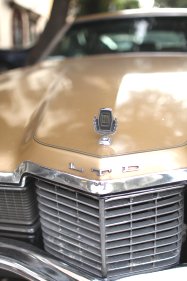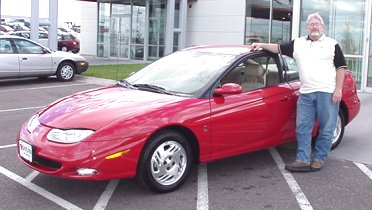One of the keys to avoiding debt is to know how it overtakes us. Without a doubt, debt has many helpers in the form of large and recurring expenses. I’d like to share with you a few pages from my own playbook when it comes to handling large and recurring expenses. Specifically, I’m interested in speaking to the issue of motor vehicles. It’s a good topic to address because transportation is typically 15% of the household budget of Americans…often more than what we spend on food. Cars tend to be a large expense, and even without a monthly payment, they’re a recurring expense. And, as we’re all aware, the price of insurance, fuel, tires and maintenance continues to climb.
There is nothing quite like examples from our own experience to help with understanding, so here are three from my past.
Starting Out Without a Car
This might sound a bit odd, but after I graduated college, I bought a one-way ticket to California, packed up several bags, and flew to my new home with no immediate intention of owning an automobile. For the first year in my new home, I walked to work or took public transportation. I can remember hiking home from the grocery store with a heavy pack on my back. Friends of mine used to give me a lift every now and then, or I’d ride my bicycle.
I’m certain that I was the only person in the office who didn’t own a car. Every now and then someone at work would learn that I didn’t have a car and their mouth would drop open. I’m sure many wondered “How can anyone get along without a car?” Well, I did, at least for the first year. Even when my office moved and I moved from an apartment to a place of my own, I was able to take public transit, walk or ride a bicycle to wherever I needed to go.
As you can imagine, I had considerable savings with no car payments, and no money going out for fuel, insurance, maintenance and repair. Of course, as a guy just out of college my income was rather limited too, so I had plenty of incentive to save money where I could.
Is this something that others can do? I think so, especially for people who live in urban areas where bus transportation, light rail, commuter trains, subways and cabs are available. It’s anyone’s guess as to how much money can be saved, but it’s certainly a practice that can preserve your earnings, and that’s a great way to go about avoiding an unnecessary financial burden that can contribute to debt.
The California Beater
About a year after my move to California, I learned of a vehicle that my boss was going to trade in, so I asked him if he’d consider selling it to me. He hesitated, but agreed to sell me his used car for whatever the dealership was going to give him for it. It was a 1974 LTD and I purchased it for less than $900.
This represented a good buy in many ways. First, he had taken good care of it. Second, the low price allowed me to be much less concerned about others costs of operating the vehicle.
The only drawback to that 4,300 pound car was the fuel economy. It had a big V-8 engine, so it sucked gas rather eagerly. I was able to keep that expense to a minimum because I didn’t drive much at all. I only kept liability insurance on the vehicle, and because of its age, the cost of registration was perhaps $40 a year. I had it for nearly 17 years, and I don’t think I put more than 50,000 miles on it.
Like I said, I didn’t drive much at all.
Along Comes Peer Pressure
When I changed jobs, one of my supervisors was regularly bugging me to get rid of that 1974 land yacht and get a new sexy sports car. I was making more money by that time and I assume the idea was that I should be spending more too. Well, that’s okay for some, but not for me. I pointed out to my supervisor that my car is popular when a group goes out to lunch (it held six passengers), and all day at work or at the airport or after I get home from work the car simply sits outside where whatever sex appeal it might offer does nobody any good at all. After hearing that, I think the sexy new sports car my supervisor drove started to sound like a poor investment all the way around…to both of us. To top it off, I didn’t really care much if someone dinged my LTD, banged it, ran into it, or otherwise damaged the beast. It was nearly bulletproof.
Here’s a quick story that’s completely true. A guy slammed into my LTD from behind while on the freeway and his car was totaled. He looked at my car in astonishment and said, “There’s no damage.” I replied, “You can’t hurt this thing.” I shook his hand and told him “It was nice running into you” and continued on my way.
Can people be satisfied with driving a “beater” to work? Can they put up with peer pressure about how they really should be driving something that has a much higher cost of ownership? Some people can, but many people just can’t.
Wheels of Today and Tomorrow
My current vehicle is a 2001 Saturn, and it’s the first vehicle I ever purchased new from a dealership showroom (with no recurring car payments of course). When I made the purchase I thought long and hard about what kind of vehicle to buy, and one of my biggest interests was fuel economy. I faced the plain truth then as I do today, we’re never going to see the cost of fuel go down appreciably and stay there, it’s always going to climb higher. At 38 miles per gallon, I think I bought one of the most fuel efficient vehicles on the market at the time.
I also made a commitment to myself that I’d run it about 250,000 miles before I went looking for another new vehicle. Well, I’m at 203,000 miles now, and I just don’t see me getting rid of it anytime soon. In fact, I’ve pushed back the replacement schedule to at least 300,000 miles. As they say, I’m “running the wheels off of it” although that’s really not the case at all. Instead, I’ve recently made strategic replacements of parts that are designed to keep me from running the wheels off of it. So far I’ve replaced struts, hubs and the front-wheel drive axles, and I have a fuel pump, water pump and fuel injectors sitting in the garage just waiting for me to install them. Eventually, the engine may need to be rebuilt, but for now it’s running great.
Could others pay cash for a new car so they have no monthly payment? I think so. Could others care for their vehicles such that they get good service for hundreds of thousands of miles? I think that’s entirely possible too. And, all of those kinds of actions can help in avoiding debt when it comes to our vehicles.
Avoiding Transportation Induced Debt
I don’t want to suggest that paying for transportation is a sure way to get into debt, but minimizing your overall cost of transportation is certainly one way to stop feeding the cash monster that’s eager to consume your money. Based on my experience, there are at least three ways to go about avoiding the contribution to debt that might be associated with our need for personal transportation:
- Use alternative transportation for getting around.
- Buy a good used car and wring the life out of it.
- Buy a new car and take good care of it to lower your overall cost of ownership.
There are certainly more ways to reduce the expenses associated with personal transportation, but these three stick in my mind as good first options to consider. Now, might there be other areas where we could whittle down our expenses? How about housing, food, utilities? I think this all hinges on what we’re willing to endure, all in the name of avoiding debt.



Carsharing is a great and rapidly growing piece of the ‘alternative mobility’ puzzle…
My neighbor and I share rides into town when we do errands, it saves me about $500 a year. That’s not a big chunk of money, but when you consider that’s only one way to save on the cost of transportation, you can see how it can add up to thousands a year with ease.
I passed a Ferrari one day. On my bike. Sexy sports car was useless in gridlock traffic which is probably at least 50% of the type of driving one days these days.
I hope that supervisor was not in charge of the office budget. He might have wanted to replace all the perfectly good filing cabinets with sexy, possibly fire engine red, filing cabinets 🙂
I’ve never been an image-oriented person, but some folks will spend tens of thousands just to feel better about themselves on the way to and from work, even if it’s just a crawl.